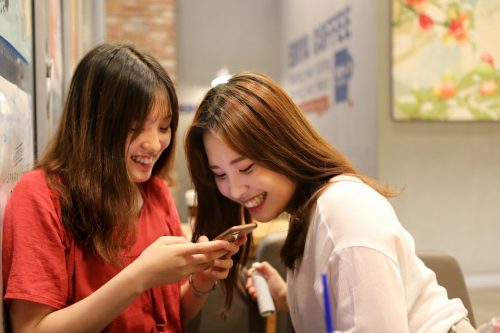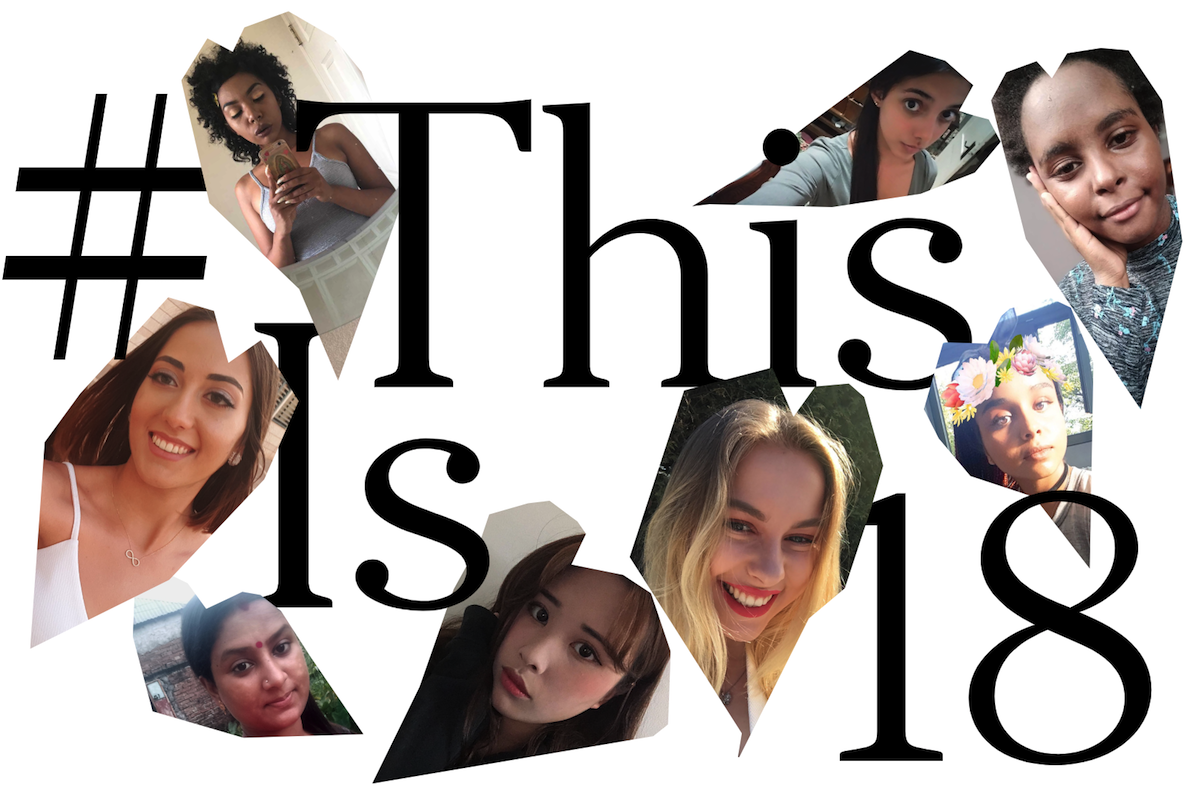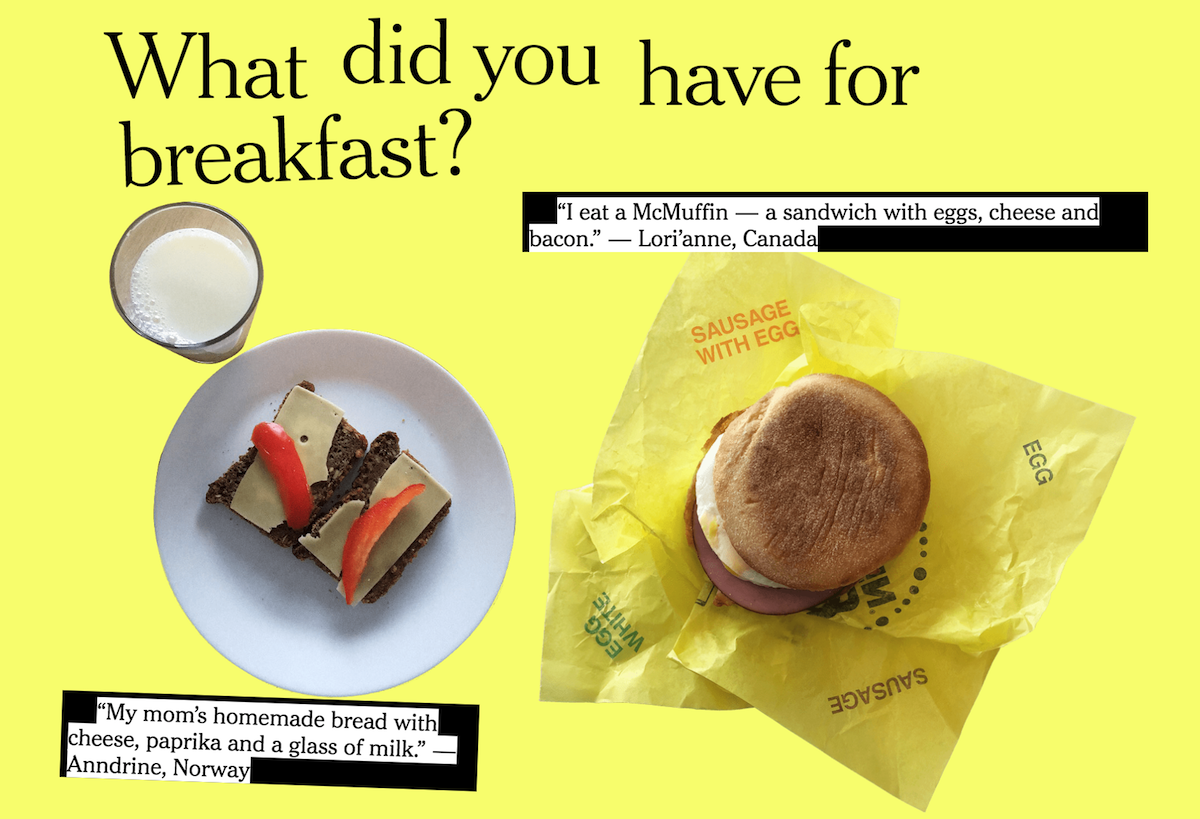This is 18: A by women, for women project from The New York Times
On October 11, The New York Times released its online version of “This is 18,” a monthslong effort to portray the lives of 21 young women around the world. The image- and video-heavy compilation of stories looks like a teenage scrapbook, with bright colors, pictures with uneven edges and words placed off-kilter on the page.
In their interviews, the women discussed topics ranging from the silly to the serious. On the lighter side, they talk about wanting to visit Paris and what they eat for breakfast. On the more serious side, they describe a childhood marred by war and apprehension about the future. There’s a section that scrolls through slang words from around the world and a Spotify playlist of the subjects’ favorite songs.
Storybench spoke to two women who worked on the project: Anya Strzemien, who served as co-editorial director, and Sandra Stevenson, who directed photography for the project.
How did the project come about?
Sandra Stevenson: Our global editor, Jodi Rudoren, initially had the idea that it would be interesting to see what young people who are 18 are doing in 2018. She actually came up with the idea a couple of years ago. We were kicking around ideas about what the best approach would be. We all knew we wanted it to be visual. We thought it would be interesting to have it be from someone in their peer group rather than assigning a staff photographer or freelance photographer. I worked with my senior staff photographer, Jim Estrin, who runs the Lens blog. Between the two of us, we figured we should know enough people around the world who could help us find young women in that age range who could help us with the project. I think we felt they could relate a little more to their subjects because of the age range. Hearing younger voices is really important.
Anya Strzemien: We also thought that there would be more of an intimacy between a young female photographer and her subject, and a higher level of trust.

In the piece, you explain why you focused on the age of 18. But why did you focus on women, rather than men?
Stevenson: There wasn’t a point where we even thought about boys. I don’t think boys came up in the discussion at all.
Strzemien: Eighteen is a particularly profound age for young women because it’s the crossroads of adulthood and youth. One in five women are already married by that age, which is astonishing. We profiled one teen mother.
How did you find the women that you profiled?
Stevenson: We actually asked the photographers to find the young women. We asked them to submit three young women. If one of them was their friend, that was okay, but the other two had to be someone they did not know. We also asked them to look for diversity in their community. They submitted three candidates along with a brief bio. We put all the material together and presented it to our editors in gender and style and looked at the photos and stories and tossed around how we could make sure we had a nice cross-section.
How did you make sure you were profiling a diverse group of women?
Stevenson: I think we lucked out. We left it in the hands of these young photographers and they were able to find the diversity we were looking for. It was hard to choose between one young woman and another because they had so much to say and so much to offer.
We were looking for diversity in socioeconomic background, diversity in interest, diversity as far as their community is concerned, and diversity of ethnic and sexual identity. We wanted to have a representation of a young mother and of a woman that was married. The photographers really did a lot of the work. It was amazing.
Did any of the women’s stories stand out to you?
Strzemien: I’m a relatively new mother so I think Madison [a young mother from Mississippi] spoke to me because we are about 20 years apart with children around the same age. I found her story very compelling. Obdulia in Mexico was fascinating. She said some pretty hilarious things and it was interesting that she felt like an old soul. Victory from Lagos, Nigeria, said her recipe for a healthy life was “good food and lit friends.” That kind of became our motto on the project.
Stevenson: For me, Maryclare from the Bronx, who was getting ready to go to college was what touched me the most because I had just dropped off my son at college.
Strzemien: This was a very useful project for gathering intel on what has stuck for these kids. We realized an emergent theme was how important their mothers are to them. They still depend on their mothers so much for guidance.
Why did you decide to format the story to look like a bit like a scrapbook?
Strzemien: Early on, we had the idea to turn this into a zine. Jessica [Bennet, co-editorial director] and I both have a background in making zines. I made a zine as a teen for a few years and it’s why I got into this business, to tell people’s stories. This felt like a good, young way to tell their stories in their own words. The aesthetic matched the energy of the piece. The most important thing we wanted to convey was a sense of fun.
Stevenson: I was impressed by all the women who worked on this project. We all work on different desks. The collaboration was quite remarkable. I’ve been at the Times for 13 years and this is the first time I’ve collaborated across desks. It shows through and added to the energy of the project because we all really believe in telling women’s stories. We worked on an all-women team, which is rare.
- How ProPublica told the story of an improper clinical trial using a patient’s own words - December 14, 2018
- This is 18: A by women, for women project from The New York Times - November 5, 2018
- Sexual assault in the U.S. Forest Service: How to interview a survivor - October 16, 2018






